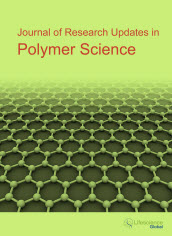jrups
Abstract : Sol-Gel Process for Anti-Corrosion Coatings
|
|
Abstract: This review paper summarizes the current state of the art of sol-gel technology for formulating anti corrosive protective coating. A brief description of the mechanism of sol-gel reactions, various parameters that influence the property of the final product and the course of the sol-gel reaction has been given. Different types of metal precursors that are extensively used in sol preparation and the advantages and disadvantages have also been mentioned in brief. Surface chemistry of sol-gel matrix and various stabilizing and destabilizing forces that are active on the surface of colloidal particles have also been discussed. Problems related to obtaining good quality product with uniformly distributed concentrations have been outlined. Possible pathways for further improvement of anti-corrosive properties of the coating have been described, such as incorporation of various types of additives into the sol matrix prior to coating. As a whole the present study summarizes the superiority and benefits of organic-inorganic hybrid coatings using sol-gel technique and having good protective and anti-corrosive properties. Keywords: Corrosion, Sol gel, chrome free, colloid, surface chemistry.Download Full Article |
Abstract : Giesekus Constitutive Model for Thermoviscoelastic Fluids based on Ordered Rate Constitutive Theories
|
|
Abstract: This paper presents derivation of Giesekus constitutive model in Eulerian description based on ordered rate constitutive theories for thermoviscoelastic fluids for compressible and incompressible cases in contra-, co-variant and Jaumann bases. The ordered rate constitutive theories for thermoviscoelastic fluids of orders (m, n) consider convected time derivative of order m of the deviatoric Cauchy stress tensor in a chosen basis (i.e. co-, contra-variant or Jaumann) as dependent variable in the development of constitutive theories for the stress tensor. Its argument tensors consist of density, temperature, convected time derivatives of the deviatoric Cauchy stress tensor of up to order m-1 and convected time derivative of up to order n of the conjugate strain tensor. In addition, constitutive theory for the heat vector compatible with the constitutive theory for the deviatoric stress tensor is also presented in co-, contra-variant and Jaumann bases. It is shown that the Giesekus constitutive model is a subset of the rate constitutive theory of orders m = n = 1. It is also shown that the deviatoric Cauchy stress tensor (contra-, co-variant or Jaumann basis) naturally results as dependent variable in the constitutive theory, and that currently used Giesekus constitutive model in deviatoric polymer Cauchy stress tensor is not derivable based on axioms and principles of the constitutive theory in continuum mechanics. Numerical studies are presented for fully developed flow between parallel plates for a dense polymeric liquid using the Giesekus constitutive model derived in this paper as well as currently used model. Keywords: Contravariant, covariant, Jaumann, upper convective, lower convective, least squares.Download Full Article |
Abstract : Formulation, Characterization, Study of Swelling Kinetics and Network Parameters of Poly (MA-co-VA-co-AA) Terpolymeric Hydrogels with Various Concentrations of Acrylic Acid
|
|
Abstract: The ter-polymeric hydrogels of vinylacetate (VA), methacrylate (MA) and acrylicacid (AA) were prepared using ethyleneglycoldimethacrylate (EGDMA) as a cross linker and benzoylperoxide (BPO) as an initiator. The effect of acrylic acid concentration on various swelling parameters was studied at different pHs (1.0, 4.0, 5.5, 7.4 and 8.0). A promising relationship was found to exist between media penetration velocity and equilibrium media content of hydrogels at all pH values for various concentration of acrylic acid. The fastest dynamic swelling was observed for the highest concentration of acrylic acid (40 mol % of AA) at pH 8.0. In the kinetic study, during the first hours, a first order kinetics (Fick Model) was observed at pH higher than the value of pKa (4.75) of acrylic acid, the hydrogels exhibiting non-Fickian diffusion mechanism. Whereas, for the acidic media pH, a second order kinetics was observed (Schott Model). Network parameters strongly support the swelling out comes. The relaxations of the ter-polymeric chain were observed after swelling at pH 8.0 via SEM pictures. Thermo gravimetric analysis and differential scanning calorimetric analysis also agree with the above conclusions. Well controlled swelling behavior, network properties, SEM out comings and thermo-gravimetric analysis support the idea to use these hydrogels for targeted drug delivery in the colon part of the digestive tract. Keywords: Hydrogels, acrylic acid, swelling, radical polymerization, ter-polymer.Download Full Article |
Abstract : Can Bio-Based Thermoset Polymers Replace Petrochemical Based Counterparts?
|
|
Abstract: Specific answers are required for purpose of better communication with many researchers, manufacturers, and users of polymer worldwide. This paper posted so many questions about the research activities on bio-based/ renewable thermoset polymers as against petrochemical based thermoset polymers. Quite a few answers were given but the remaining unanswered questions will surely be required in order to better understand the results achieved in this research area. Keywords: Renewable, cost-effective, synthesis, environmentally friendly.Download Full Article |






















